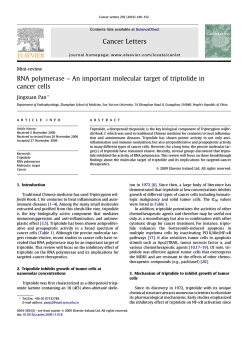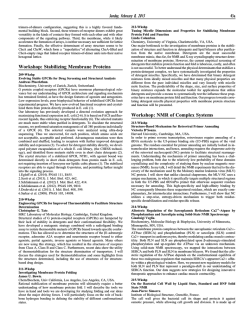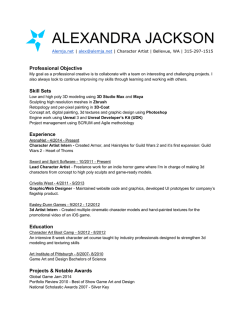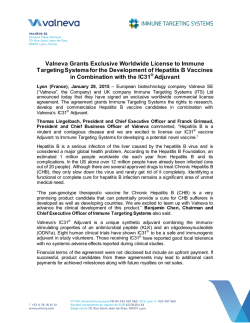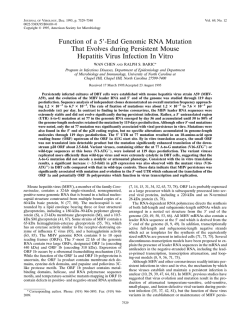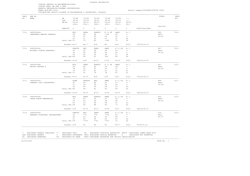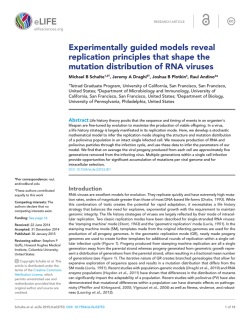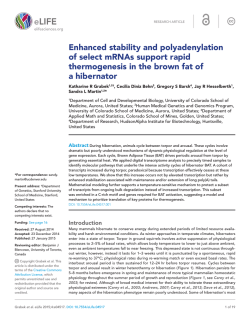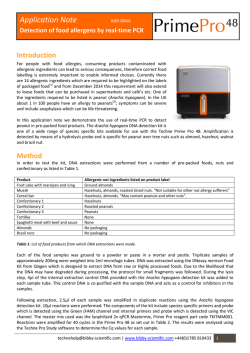
Download Supporting Information (PDF)
Supporting Information Scheel et al. 10.1073/pnas.1500265112 SI Materials and Methods Primary Samples. Samples for prevalence studies were sera from an Alabama herd followed from 2008 to 2012, consisting of 18–29 animals, and plasma samples from 17 Louisiana horses. Additional samples were analyzed from New York horses previously identified as NPHV carriers. Ultrasound-guided percutaneous biopsies were taken from selected horses, using standard procedures at the College of Veterinary Medicine, Cornell University or College of Veterinary Medicine, Auburn University and adhered to the Institutional Animal Care and Use Committee protocol at these institutions. Standard commercial sera for cell culture were from the following companies: Life Technologies, Sigma, Lonza, Omega, Atlanta, ATCC, Fisher, and Jackson Immunoresearch. Detection, Quantification, and Sequencing of Viral RNA and miRNA. RNA was purified from serum or plasma using the High Pure Viral Nucleic Acid Kit (Roche) or TRIzol (Life Technologies) and from tissues using the RNeasy mini kit (Qiagen) after disruption, using TissueLyser LT with a 5-mm metal bead (Qiagen). For viral RNA screening, cDNA was synthesized using SuperScriptIII (Life Technologies) and random nonamers (Sigma) at 25 °C for 15 min followed by a gradient from 50 °C to 55 °C over 60 min. Samples were screened for NPHV using AmpliTaq Gold (Life Technologies) and primer set RU-O-17723/RUO-17724 (5′-UTR) or RU-O-17951/RU-O-17953 (Core-E2) at 95 °C for 8 min and 10 cycles of 95 °C for 40 s, 59 °C (decreasing by 0.5 °C per cycle) for 45 s, and 72 °C for 30 s, followed by 30 cycles of 95 °C for 30 s, 56 °C for 40 s, and 72 °C for 30 s (primer sequences are in Table S2). Screening for TDAV and EPgV was carried out using similar conditions and primer sets RU-O-20000/RUO-20001 (TDAV, annealing temperature 61 °C decreasing to 56 °C) and RU-O-19037/RU-O-19038 (EPgV, annealing temperature 67 °C decreasing to 62 °C). Viral sequences were determined directly from PCR amplicons or after TOPO-TA cloning (Life Technologies). A one-step NPHV qRT-PCR was established with primers RU-O-19381 and RU-O-19382, probe RU-O19383, and TaqMan Fast Virus 1-Step Master Mix (Applied Bioscience) on a LightCycler 480 (Roche) at 50 °C for 30 min and 95 °C for 5 min, followed by 40 cycles of 95 °C for 15 s, 56 °C for 30 s, and 60 °C for 45 s. An NPHV standard curve was generated from in vitro transcribed RNA from the NZP1 consensus clone, which was quantified (Nanodrop) and diluted to cover the range of 5 × 108–5 × 101 GE/μL. The presence of negative strand RNA in liver biopsies was confirmed by 5′RACE (Life Technologies) on (−)RNA as described below for determining the 3′-UTR. To sequence the ORF, cDNA was synthesized using SuperScriptIII in a gradient from 50 °C to 55 °C over 60 min, followed by treatment with RNase H and T1 for 20 min at 37 °C. The first and second PCRs were performed using Accuprime Pfx supermix (Life Technologies) with cycling parameters 95 °C for 5 min followed by 35 cycles of 95 °C for 20 s, 58 °C for 30 s, and 68 °C for 7 min (3 min in second PCR). Primers for this procedure are listed in Table S3. miRNAs were quantified using the miScript II RT kit (Qiagen) and qPCR using SYBR Green PCR Master Mix (Applied Biosystems) and forward primers identical to the miRNA sequence on a LightCycler 480 at 95 °C for 10 min followed by 40 cycles of 95 °C for 15 s, 55 °C for 30 s, and 60 °C for 30 s. Standard curves were generated by diluting miRIDIAN miRNA mimic (Thermo Fisher) to the range of 1 × 108–1 × 101 copies per microliter. Scheel et al. www.pnas.org/cgi/content/short/1500265112 Determination of the NPHV 5′- and 3′-UTR. The previously published sequence of the NPHV 5′-UTR (1) was confirmed using 5′-RACE on NZP1 serum RNA. Primer RU-O-17726 and SuperScriptIII were used for cDNA synthesis in a gradient from 50 °C to 55 °C. TdT tailing was performed using either dCTP or dATP, first-round PCR primers were AAP/RU-O-18040 (dCTP) or RU-O-18177/RU-O-18040 (dATP), and second-round primers were AUAP/RU-O-17206 (dCTP) or RU-O-17918/RU-O-17206 (dATP). PCR products were generated using AmpliTaq Gold polymerase (Applied Biosystems) with cycling parameters 95 °C for 2 min followed by 30 cycles of 95 °C for 30 s, 55 °C for 40 s, and 72 °C for 1 min. The two tailing protocols uniquely identified the complete 5′-UTR. To determine the 3′-UTR, RNA from NZP1 serum was used for linker ligation, using T4 RNA ligase 1 (Fermentas) and P-RL3.2 ssRNA linker (2) at 16 °C overnight. cDNA was synthesized using SuperScriptIII and primer RU-O-17918 in a gradient from 50 °C to 55 °C over 60 min. Alternatively, RNA was tailed with homopolymers of GTP, ATP, or UTP, using Yeast Poly(A) Polymerase (USB Affymetrix), and cDNA was synthesized as above using primers RU-O-18176, RU-O-18177, or RU-O-18329. A first-round PCR using Ex Taq DNA polymerase, Hot Start (Clontech) was run using primers RU-O17670 and RU-O-17918. When necessary, a second-round PCR was run using primer RU-O-18168 and the corresponding cDNA primer. Cycling parameters were 94 °C for 2 min, followed by 40 cycles of 94 °C for 30 s, 55 °C for 30 s, and 72 °C for 30 s. Linker ligation exclusively identified genomes terminating in poly(A) tails immediately downstream of the stop codon. Because no tailing procedures had been used on NPHV samples at the time, they were unlikely to be contaminants. Poly(G) tailing led to amplification of the short poly(A) tract, the variable region, the poly(U/C) tract, and the partial conserved intermediate region until a G-rich stretch (nucleotides 9302–9308). Poly(A) and poly(U) tailing using forward primers in the 3′-variable region led to amplification of the entire conserved intermediate region. The terminal sequence, including the long poly(U) tract and conserved 3′X region, was amplified by 5′-RACE on (−)RNA from liver. For this, RNA was mixed with primer RU-O-18357 and dNTPs and incubated at 105 °C for 45 s to denature dsRNA and immediately transferred to 50 °C. Prewarmed SuperScriptIII master mix containing additional RU-O-18357 was added and incubated in a gradient from 50 °C to 60 °C over 60 min. RNA was then degraded by RNAseH and T1 for 20 min at 37 °C. Next, the 5′-RACE protocol was followed for cDNA purification and 5′-poly(dC) tailing. A first-round PCR using AmpliTaq Gold polymerase was run using primers RU-O-18358 and AAP. A second-round PCR was run using primers RU-O-18328 and AUAP. Cycling parameters were 95 °C for 2 min, followed by 40 cycles of 95 °C for 30 s, 55 °C for 40 s, and 72 °C for 1 min. To amplify the 3′-UTR of other isolates, reverse transcription and PCR conditions were as described above. Primers were RU-O-18354 and RU-O-19846 for cDNA synthesis; RU-O-18357/RU-O-18354, RU-O-18328/RU-O-19847, or RU-O-19849/RU-O-19846 for firstround PCR (three overlapping fragments); and RU-O-18358/ RU-O-18355, RU-O-19136/RU-O-19848, or RU-O-19849/RUO-19846 for second-round PCR. Exact length determinations of the poly(U) tract using RT-PCR, as performed here, are difficult due to inaccuracy of reverse transcriptase in lowcomplexity sequences, and the determined length therefore might deviate from the most abundant length in the viral RNA. 1 of 9 To determine the 3′ terminus of serum-derived RNA from the liver-inoculated horse, 3′ G tailing of RNA was performed as above with forward PCR primers replaced by RU-O-19849 (first round) and RU-O-21833 (second round). The 5′ terminus was determined as above. Amplicons from all methods were TOPO-TA cloned and sequenced (Macrogen). NPHV and HCV DNA Constructs. To obtain an NPHV consensus sequence, RNA from NZP1 serum was reverse transcribed using SuperScriptIII and primers RU-O-17037 and RU-O-17039 in a gradient from 50 °C to 55 °C over 60 min (primers RU-O-17174 and RU-O-17175 for fragment III). Fragment I (nucleotides 339–2,056) was amplified using Accuprime Pfx supermix and primers RU-O-17640 and RU-O-17036. Fragments II–IV (nucleotides 1,701–4,559, 4,289–7,107, and 6,753–9,147, respectively) were amplified in nested procedures, using first-round primers RU-O-17033/RU-O-17037 (II), RU-O-17152/RU-O-17174 (III), or RU-O-17035/RU-O-17039 (IV) and second-round primers RU-O-17070/RU-O-17073 (II), RU-O-17071/RU-O-17038 (III), or RU-O-17072/RU-O-17075 (IV). Cycling parameters were 95 °C for 5 min, followed by 35 cycles of 95 °C for 20 s, 58 °C for 30 s, and 68 °C for 3–6 min. Amplicons were TOPO-XL cloned and 7–10 clones per fragment were sequenced to determine the consensus. A full-length consensus clone, pNZP1, was assembled in pCRXL-TOPO, using standard PCR and restriction digest molecular biology from a 5′-UTR RACE clone, clones of fragments I–IV, and overlapping clones of the 3′-UTR. The T7 promoter present in the original plasmid was replaced by a T7 promoter and a single G immediately upstream of the NPHV sequence, and a BspEI site was engineered immediately downstream of the 3′-UTR for linearization. A replication-deficient clone, pNZP1GNN, was constructed by mutating the NS5B active site, GDD, by site-directed mutagenesis. A fluorescent reporter construct, pNZP1-Ypet, was constructed from pJc1-5AB-Ypet (3) by duplication of the NPHV NS5A-5B cleavage site. As observed for other Flaviviridae, the NPHV sequence was slightly toxic to Escherichia coli. Thus, after transformation, bacteria were grown at 30 °C with kanamycin selection for an extended time (24–36 h). Endo-free maxipreps (Qiagen) were prepared for in vivo work. The NPHV subgenomic replicon, pNZP1-SGR, was constructed in the Con1 replicon backbone (4), by replacing the HCV 5′-UTR and the first 45 nt of Core as well as the NS3-3′-UTR sequence by the corresponding sequence of NZP1. A single G was placed upstream of the NPHV sequence, and a BspEI site was placed immediately downstream of the 3′-UTR for linearization, adjacent to the SpeI site in the backbone. A replication-deficient clone, pNZP1-SGR-GNN, was constructed as above. NPHV translation reporters were constructed in the pNZP1 background by replacing the NPHV sequence from nucleotide 412 to nucleotide 9,147 by Renilla luciferase and a stop codon, leaving the first 27 nt (9 aa) of Core as a translated N terminus as well as the last 66 nt of NS5B as an untranslated 5′ extension of the 3′-UTR. In addition, the following variants were constructed: (i) deletion of the poly(U) and 3′X regions and (ii) replacement of the last stem loop of the intermediate region, the poly(U) and 3′X regions by the terminal stem loop of HCV (NZP1 nucleotides 9,326–9,538 replaced by nucleotides 9,598–9,646 of H77, AF009606). A variant with no 3′-UTR was generated by BamHI cleavage before transcription, leaving only 8 nt downstream of the Renilla luciferase stop codon. For bacterial expression, the NPHV NS5A sequence devoid of the predicted amphipathic α-helix (5) (NS5AΔAAH, NS5A amino acids 36–405, NZP1 nucleotides 6,334–7,443) was flanked by BamHI and NotI for cloning upstream of the C terminus of His6-tagged Smt3 (yeast small ubiquitin-like modifier protein) in a pET28a vector (Novagen). Scheel et al. www.pnas.org/cgi/content/short/1500265112 The HCV plasmids pJc1 (6), pJ6/JFH1-GNN (7), and pH-SGNeo (L+8) (8) have been described. Cell Culture and Preparation of EFLCs. Huh-7.5, Clone8 (9), MDCK, D-17, and HEK293 cells were maintained in DMEM supplemented with 10% (vol/vol) FBS; E.Derm and BHK-21 in MEM with 10% FBS; MDBK and BT in DMEM with 10% BVDV-free FBS, nonessential amino acids, and 0.1 mM sodium pyruvate; PK-15 in DMEM with 5% (vol/vol) horse serum; and Vero in serum-free Opti-Pro with 4 mM glutamine. MDCK and PK-15 cells were split using increased trypsin concentration (0.25%). Vero cells were split using TrypLE Express (Life Technologies). To prepare EFLCs, an equine fetal liver (80 d of gestation) was placed in RPMI medium on ice, and EFLCs were isolated the same day as previously described (10). A total of 3.2 × 104 cells in W10 plating medium were plated per well of a 96-well plate. After attachment, EFLCs were cultivated in serum-free hepatocyte defined medium (HDM) (BD Biosciences). For visualization of hepatocytes and monitoring of hepacivirus NS3-4A expression, EFLCs were transduced with pTRIP-SV40-AlbtagRFP-nlsIPS as previously described (10). Lentivirus Transduction for miR-122 Expression. For lentivirus production, 2.3 × 106 293T cells plated in a poly-D-lysine–coated 10-cm dish in DMEM with 3% FBS were transfected using Xtremegene-9 (Roche) with pVSV-G, pHIV-gag-pol, and pTrip-dU3-miR122SV40-polyA-RSVp-Bsd-IRES-TagRFP expressing miR-122 under the CMV promoter and blasticidin and tagRFP under the RSV promoter bicistronically separated by the EMCV IRES. Supernatant was collected for 72 h. A pTrip-GFP vector was included as a control. For transduction, E.Derm, MDBK, MDCK, and PK-15 cells were spinoculated for 1 h at 1,000 × g at 37 °C in six-well format, with twofold dilutions of lentivirus in cell-type-specific media containing 20 mM Hepes and 4 μg/mL polybrene. From 2 d posttransduction, cells were kept under selection with 15 μg/mL blasticidin, and the completely selected cell lines were termed E.Derm/122, MDBK/122, MDCK/122, and PK-15/122. NPHV Protein Expression, Purification of NS5A Antibodies, and Western Blotting. To obtain T7 expression in HEK293 and BHK-21 cells, cells growing in six-well plates were infected with vTF7-3 (11) in 400 μL PBS with 1% FCS and 1 mM MgCl2 at multiplicity of infection = 10 for 60 min. Immediately thereafter, cells were transfected for 3 h with 2.5 μg pNZP1 or pJ6/JFH1-GNN DNA mixed with 5 μL Lipofectamine 2000 (Life Technologies) in 500 μL OptiMEM. Cells were used for WB or immunostaining at 24 h. To generate recombinant NPHV NS5AΔAAH for antibody purification, the NPHV NS5AΔAAH plasmid was transformed into Rosetta 2 (DE3) cells (Novagen). After cell growth at 37 °C to OD600, protein expression was induced for 0.5 h and 4 h at 25 °C in the presence of 0.5 mM isopropylthio-β-galactoside, and the cells were harvested and resuspended in 20% sucrose, 50 mM Tris, pH 8.5. The cells were then frozen in liquid nitrogen and stored at −80 °C. To purify NS5A, cells were next thawed and lysed by sonication in 500 mM NaCl, 20 mM Tris (pH 8.5), 1 mM PMSF, 0.1% (vol/vol) IGEPAL, 10 mM imidazole, 1 mM β-mercaptoethanol, 50 μg/mL lysozyme, 5 μg/mL DNase I, and 2.5 μg/mL RNase A. The protein was sequentially purified through His6-tag affinity, ionexchange, and gel-filtration columns (Ni-Sepharose 6 Fast Flow resin, HiTrap Q HP 5 mL, and Superdex 200 10/300 GL; GE Healthcare). The His6-Smt3 tag was cleaved by the Ulp1 protease (12) after the protein was eluted from the Ni column. Pure protein fractions were pooled and concentrated to 20 mg/mL in 50 mM NaCl, 20 mM Tris (pH 8.5), and 5 mM DTT. Aliquots were flash frozen in liquid nitrogen and stored at −80 °C. To purify NPHV NS5A-specific antibodies, crude horse serum (lot 8211574) was precipitated by slow mixing with saturated ammonium sulfate (Pierce) and stirring for 1 h. The 2 of 9 sample was centrifuged at 5,000 × g for 20 min, and the precipitate was dissolved in 15 mL PBS. Dissolved precipitated protein was dialyzed in a 20-kDa dialysis cassette (Pierce) against 1 L PBS overnight. The sample was then applied to a column loaded with purified NPHV NS5AΔAAH crosslinked to UltraLink Biosupport (Thermo). NS5A-reactive antibody was eluted using 0.1 M glycine, 2% acetic acid, pH 2.2, into neutral pH buffer, and this sample was termed antiNPHV NS5A8211574. For Western blots, cell pellets were lysed with 1 mL cold radioimmunoprecipitation assay buffer with cOmplete Mini Protease Inhibitor Mixture Tablets (Roche) and incubated for 5 min, shaking at 1,000 rpm at 37 °C with 30 μL of RQ1 DNase (Promega). Lysates were cleared at 14,000 × g, 4 °C for 15 min before incubation in NuPAGE sample buffer under reducing conditions at 70 °C for 10 min and loading on a NuPAGE 4–12% or 10% gel. As a primary antibody, crude commercial horse serum (1:500), anti-HCV NS5A9E10 (1:1,000) (7), anti-NPHV NS5A8211574 (1:500), or β-actin peroxidase (Sigma; 1:100,000) was used. Secondary antibody was rabbit anti–mouse-HRP (Pierce; 1:1,000) or rabbit polyclonal secondary antibody to horse IgG-H&L (HRP) (Abcam; 1:20,000). Albumin ELISA. The human albumin ELISA was previously de- scribed (10). The equine albumin ELISA was adapted from this protocol, using horse albumin cross adsorbed antibody (Bethyl A70-422A) for plate coating and horse albumin cross adsorbed antibody, HRP coupled (Bethyl A70-422P) for detection. Translation Luciferase Assays. NPHV Renilla luciferase reporters were linearized with BspEI or BamHI and transcribed as described in In Vitro Transcription, Transfection, and Electroporation. A capped firefly luciferase reporter with a synthetic poly(A) tail was transcribed using T7 mMessage mMachine (Ambion). Twenty-four hours after plating, 2 × 104 cells per well in 48-well plates were transfected with miRIDIAN miR-122 mimic or LNA-122 (Exiqon) at 3 nM and 30 nM final concentration, respectively, using Lipofectamine RNAiMAX. Fortyeight hours after plating, Huh-7.5, E.Derm, and E.Derm/122 cells were transfected with 1 μg/well NPHV Renilla RNA and 50 ng firefly control RNA, using Lipofectamine 2000. After another 24 h, the relative luciferase expression was measured using the Dual Luciferase Reporter Assay (Promega) on a FLUOstar Omega (BMG Labtech). Normalization for RNA amount was done by RNA extraction using RNeasy and cDNA synthesis, using SuperScript III and random nonamers as above; followed by qPCR using SYBR Green PCR Master Mix and primers RU-O-18876/RU-O-18877 (Renilla) or RU-O-18878/RU-O-18879 (firefly) on a LightCycler 480 at 95 °C for 10 min; followed by 40 cycles of 95 °C for 15 s, 55 °C for 30 s, and 60 °C for 30 s. 1. Burbelo PD, et al. (2012) Serology-enabled discovery of genetically diverse hepaciviruses in a new host. J Virol 86(11):6171–6178. 2. Chi SW, Zang JB, Mele A, Darnell RB (2009) Argonaute HITS-CLIP decodes microRNAmRNA interaction maps. Nature 460(7254):479–486. 3. Horwitz JA, et al. (2013) Expression of heterologous proteins flanked by NS3-4A cleavage sites within the hepatitis C virus polyprotein. Virology 439(1):23–33. 4. Lohmann V, et al. (1999) Replication of subgenomic hepatitis C virus RNAs in a hepatoma cell line. Science 285(5424):110–113. 5. Brass V, et al. (2002) An amino-terminal amphipathic alpha-helix mediates membrane association of the hepatitis C virus nonstructural protein 5A. J Biol Chem 277(10):8130–8139. 6. Pietschmann T, et al. (2006) Construction and characterization of infectious intragenotypic and intergenotypic hepatitis C virus chimeras. Proc Natl Acad Sci USA 103(19):7408–7413. 7. Lindenbach BD, et al. (2005) Complete replication of hepatitis C virus in cell culture. Science 309(5734):623–626. Scheel et al. www.pnas.org/cgi/content/short/1500265112 In Vitro Transcription, Transfection, and Electroporation. NPHV RNA was in vitro transcribed from BspEI-linearized DNA plasmids, using the T7 RiboMAX Express Large Scale RNA Production System (Promega). RNA was treated with RQ1 DNase on ice for 30 min and purified on RNeasy columns. For transfection into cell lines, 2.5 μg RNA was mixed with 5 μL Lipofectamine 2000 in 500 μL OptiMEM, incubated 20 min, and added to 4 × 105 cells in 2 mL media in six-well plates. Cells were split every 2–3 d, and supernatant and pelleted cell aliquots were stored at −80 °C for subsequent analysis by qRTPCR. Infection was further monitored by immunostaining using anti-NPHV NS5A8211574 (1:50) and rabbit polyclonal secondary antibody to horse IgG-H&L (FITC) (Abcam; 1:50) or by Ypet expression (NZP1-Ypet). For transfection into EFLCs, 48 ng RNA was mixed with 0.8 μL DMRIE-C (Life Technologies) in 40 μL OptiMEM per well of a 96-well plate and incubated for 2 h at 37 °C. For replicon experiments, RNA was produced as above from pNZP1-SGR and the corresponding GNN control or from the HCV-positive control, pH-SG-Neo (L+8), with additional RNeasy on-column DNase I treatment. In a 4-mm cuvette, 5 μg RNA was added to a 400-μL suspension of 6 × 10 6 Huh-7.5, E.Derm, E.Derm/122, MDCK, MDCK/122, PK-15, or PK-15/ 122 cells or 8 × 106 MDBK or MDBK/122 cells, before electroporation using five 100-μs square-wave pulses of 860 V (Huh7.5), 750 V (E.Derm, E.Derm/122, MDCK, MDCK/122, PK-15, and PK-15/122), or 900 V (MDBK and MDBK/122) over 1.1 s. Starting from 48 h postelectroporation, cells were selected using 750 μg/mL (Huh-7.5, MDBK, MDBK/122, MDCK, MDCK/122, PK-15, and PK-15/122) or 500 μg/mL (E.Derm and E.Derm/122) G418. The presence of colonies was evaluated after 2–3 wk when massive cell death had occurred and defined colonies were visible for the HCV control in Huh-7.5 cells. In Vivo RNA Inoculation and Monitoring of Infection. An NPHV, TDAV, and EPgV RNA-free and NPHV antibody-free Arabian gelding was identified and used for the RNA inoculation experiment. Procaine penicillin, gentamicin, and flunixin meglumine were administered just before the procedure, and the horse was sedated with detomidine. A laparoscopic cannula was inserted through an incision through the skin, allowing for internal video monitoring, and the abdomen was insufflated to 15 mmHg, using CO2 gas. At that time, an 18-gauge needle was inserted and video guided to the liver. Seven batches of NZP1 in vitro transcribed NPHV RNA, a total of ∼350 μg RNA, were then injected into seven different sites of the liver (Movie S1). Complete blood counts and clinical biochemical profiles were performed before and following the procedure. Sample preparation and RNA analysis from serum and liver and lymph node biopsies were as described above. NPHV reactive antibodies were measured using the luciferase immunoprecipitation system (LIPS) assay as described in ref. 1. 8. Tscherne DM, et al. (2007) Superinfection exclusion in cells infected with hepatitis C virus. J Virol 81(8):3693–3703. 9. Jones CT, et al. (2010) Real-time imaging of hepatitis C virus infection using a fluorescent cell-based reporter system. Nat Biotechnol 28(2):167–171. 10. Andrus L, et al. (2011) Expression of paramyxovirus V proteins promotes replication and spread of hepatitis C virus in cultures of primary human fetal liver cells. Hepatology 54(6):1901–1912. 11. Fuerst TR, Niles EG, Studier FW, Moss B (1986) Eukaryotic transient-expression system based on recombinant vaccinia virus that synthesizes bacteriophage T7 RNA polymerase. Proc Natl Acad Sci USA 83(21):8122–8126. 12. Mossessova E, Lima CD (2000) Ulp1-SUMO crystal structure and genetic analysis reveal conserved interactions and a regulatory element essential for cell growth in yeast. Mol Cell 5(5):865–876. 3 of 9 Fig. S1. The evolutionary history of the E1 and partial Core and E2 region (amino acid residues 176–479) from NPHV isolates from commercial horse sera and FBS ($) and previously published isolates (*) (1–4) including NZP1 (1) and CHV (#) (5) was inferred using the neighbor-joining method. The percentages of replicate trees in which taxa clustered together are shown (when >70%). The evolutionary distances are in the units of the number of amino acid substitutions per site. Evolutionary analyses were done using MEGA5 (6). 1. 2. 3. 4. 5. 6. Burbelo PD, et al. (2012) Serology-enabled discovery of genetically diverse hepaciviruses in a new host. J Virol 86(11):6171–6178. Lyons S, et al. (2012) Nonprimate hepaciviruses in domestic horses, United Kingdom. Emerg Infect Dis 18(12):1976–1982. Reuter G, Maza N, Pankovics P, Boros A (2014) Non-primate hepacivirus infection with apparent hepatitis in a horse - Short communication. Acta Vet Hung 62(3):422–427. Tanaka T, et al. (2014) Hallmarks of hepatitis C virus in equine hepacivirus. J Virol 88(22):13352–13366. Kapoor A, et al. (2011) Characterization of a canine homolog of hepatitis C virus. Proc Natl Acad Sci USA 108(28):11608–11613. Tamura K, et al. (2011) MEGA5: Molecular evolutionary genetics analysis using maximum likelihood, evolutionary distance, and maximum parsimony methods. Mol Biol Evol 28(10): 2731–2739. Scheel et al. www.pnas.org/cgi/content/short/1500265112 4 of 9 stop Poly(A) region Variable region Poly(U/C) region pNZP1 NZP1 M303 A108 A131 A132 B10 AB863589 AB921150 AB921151 9211 TAAAAAAA---------GAAAAA----------TAA-TTAGCT--CCTAATTCATT--CTTTCTCTTCTT-------CCCTCTTTATTTCCTTTATT UAAAAAAAAAAAAAAAAGAAAAA----------UAA-UUAGCU -CCUAAUUCAUU--CUUUCUUUUCUUUUUUUUUCCCUCUUUAUUUCCUUUAUU UAAAAAAAA-------GGAAAAA----------UAAAUUUGCUUUCCUAAUUUACCA-CUUUCCUUU----------CUCUCUUUAUUUCCUUUCUU UAAAAAAAAAA------GAAAAA----------UAAAUUUGCUUUCCUAAUUUACCA-CUUUCCUUU----------CUCUCUUUAUUUCCUUUUUUUUUUUU UAAAAAAAA--------GAAAA-----------UAAAUUUGCUUUCCUAAUUUACCA-CUUUCCUUU----------CUCUCUUUAUUUCCUUUCUU UAAAAAAA---------GAAAA-----------UAAAUUUGCUUUCCUAAUUUACCA-CUUUCCUUU----------CUCUCUUUAUUUCCUUUCUU UAAGAAAGAAAA-----GAAAAAAAAA------UAA-UUAAUAAAAUCUUUAUCUAAACUU-CCUUUCCCUUUCCCCUUCUUUCCCGUUUUCUUUUUUUUUUUU UAAAAAAAAAAA-----GAAAA-----------UAA-UU---AAAAUUCUUU---AGACUU-CCUUUCCCCUUCCC-CUUUUUCCCGUUUA UAGAUAAAUAAAUCAAAAAAAAAAAAAAAAAAAUAA-UU----AAAU--------AG-UUUUCCUUUCCCUUUUCCCCUUUU-CCC-UUUA UAAAACCUAAAAAAAAAAAAAAACCAA------UAAAAUAAUAAGAUAAAUUAAUCAG------ pNZP1 NZP1 M303 A108 A131 A132 B10 AB863589 AB921150 9277 GGTTACTTCCTATGGAAGAACAGGAGGGTGGGTG-ATGGGAGCCCTGTTCCGCCCCTATGGGGCGAAAATG(T)96 CTTTCTCT GGUUACUUCCUAUGGAAGAACAGGAGGGUGGGUG-AUGGGAGCCCUGUUCCGCCCCUAUGGGGCGAAAAUG(U)81-86CCUUCUCU GGUUACUUCCUAUGGAAGAACAGGAGGGUGGGUG-AUGGGAGCCCUGUUCCGCCCCUAUGGGGCGAAAAUG(U)88-96CUUUCUCU GGUUACUUCCUAUGGAAGAACAGGAGGGUGGGUG-AUGGGAGCCCUGUUCCGCCCCUAUGGGGCGAAAAUG(U)66-80CUUUCUCU GGUUACUUCCUAUGGAAGAACAGGAGGGUGGGUG-AUGGGAGCCCUGUCCCGCC GGUUACUUCCUAUGGAAGAACAGGAGGGUGGGUG-AUGGGAGCCCUGUUCCGC GGUUACUUCCUAUGGAAGAACAGGA GGUUACUUCCUAUGGAAGAACAGGAGGGUGGGUGUAUGGGAGCCCUGUUUGGCCCCUAUGGGGCCAAGUUG GGUUACUUCCUAUGGAAGAACAGGAGGGUGGGUG-ACGGGAGCCCUGUCCUGCCCCUAUGGGGC-AGUUUA pNZP1 NZP1 M303 A108 9451 ATTGATGGGTGGCTCCCCTTAGCTCTAGTCACGGCTAGCTTCTGAAGGCCCGTGAGCCGCATGGTCCCGGGATATCCCGGGACTATGT AUUGAUGGGUGGCUCCCCUUAGCUCUAGUCACGGCUAGCUUCUGAAGGCCCGUGAGCCGCAUGGUCC AUUGAUGGGUGGCUCCCCUUAGCUCUAGUCACGGCUAGCUUCUGAAGGCCCGUGAGCCGCAUGGUCCCGGGAUAUCCCGGGACUAUGU/. AUUGAUGGGUGGCUCCCCUUAGCUCUAGUCACGGCUAGCUUCUGAAGGCCCGUGAGCCGCAUGGUCC Conserved intermediate region Poly(U) tract Fig. S2. Alignment of the NPHV 3′-UTR. Individual equine isolates for which the entire or partial 3′-UTR was determined were manually aligned and annotated. Previously published partial sequences were included for comparison (1). Red font indicates sequences with variation among individual clones of the given isolate. For length variations in homopolymer regions, the longest identified sequence is given. The slash indicates the 3′ terminus (or BspEI site for pNZP1). 1. Tanaka T, et al. (2014) Hallmarks of hepatitis C virus in equine hepacivirus. J Virol 88(22):13352–13366. Fig. S3. Transfection of NZP1 consensus RNA into various cell lines. RNA transcripts from pNZP1 and pNZP1-GNN were transfected into indicated cell lines. Replication was assayed by qRT-PCR on intracellular NPHV RNA over time. Scheel et al. www.pnas.org/cgi/content/short/1500265112 5 of 9 Fig. S4. Putative kissing-loop interactions between the NPHV 3′-UTR and upstream sequences. Analogous to HCV kissing-loop structural RNA interactions, putative interactions with the NPHV 3′-UTR were predicted for the 3′X stem-loop II (analogous to HCV) and for the conserved intermediate region stem-loop II, which both contain reasonably large unpaired loops. Putative interactions were predicted by BLAST alignment of the loop sequences to the NPHV genome. Complementary motifs predicted to be located in loop structures by Mfold (1) and surrounding sequences are shown. Complementary motifs not located in loop structures were excluded. 1. Zuker M (2003) Mfold web server for nucleic acid folding and hybridization prediction. Nucleic Acids Res 31(13):3406–3415. Scheel et al. www.pnas.org/cgi/content/short/1500265112 6 of 9 Table S1. Sequence characteristics of pNZP1 and the NZP1 consensus sequence Position, nt 584 1,509 1,803 2,808 3,666 4,851 5,829 6,096 6,255 8,157 8,975 Coding changes T67I s. s. s. s. s. s. s. s. s. R2866K Determined NZP1 consensus sequence (no. clones) C T T C C T T C C T G (6/7) (5/7) (9/15) (5/7) (7/7) (9/10) (6/9) (8/9) (8/9) (6/10) (6/10) Published NZP1 sequence, JQ434001 pNZP1 T C C T C T C C C C A C T C C T C T T T T G Differences from consensus sequence determined in this study are underlined. For pNZP1 3′-UTR sequence, see Fig. S2. In addition, the following residues known to be of critical importance to HCV replication were conserved in the pNZP1 clone: D1087 and S1145 in the NS3 protease (1); DECH (1,296–1,299) in the NS3 helicase (1); G1658 in NS4A (2); C1987, C2005, C2007, C2028, and W2274 in NS5A (3, 4); and GDD (2,669–2,671) in NS5B (5). s., synonymous. 1. Kolykhalov AA, Mihalik K, Feinstone SM, Rice CM (2000) Hepatitis C virus-encoded enzymatic activities and conserved RNA elements in the 3′ nontranslated region are essential for virus replication in vivo. J Virol 74(4):2046–2051. 2. Brass V, et al. (2008) Structural determinants for membrane association and dynamic organization of the hepatitis C virus NS3-4A complex. Proc Natl Acad Sci USA 105(38):14545–14550. 3. Tellinghuisen TL, Foss KL, Treadaway JC, Rice CM (2008) Identification of residues required for RNA replication in domains II and III of the hepatitis C virus NS5A protein. J Virol 82(3): 1073–1083. 4. Tellinghuisen TL, Marcotrigiano J, Gorbalenya AE, Rice CM (2004) The NS5A protein of hepatitis C virus is a zinc metalloprotein. J Biol Chem 279(47):48576–48587. 5. Krieger N, Lohmann V, Bartenschlager R (2001) Enhancement of hepatitis C virus RNA replication by cell culture-adaptive mutations. J Virol 75(10):4614–4624. Scheel et al. www.pnas.org/cgi/content/short/1500265112 7 of 9 Table S2. Sequence of oligonucleotides Name RU-O-17033 RU-O-17034 RU-O-17035 RU-O-17036 RU-O-17037 RU-O-17038 RU-O-17039 RU-O-17070 RU-O-17071 RU-O-17072 RU-O-17073 RU-O-17075 RU-O-17148 RU-O-17152 RU-O-17159 RU-O-17163 RU-O-17168 RU-O-17170 RU-O-17171 RU-O-17172 RU-O-17174 RU-O-17175 RU-O-17206 RU-O-17640 RU-O-17670 RU-O-17723 RU-O-17724 RU-O-17725 RU-O-17726 RU-O-17918 RU-O-17951 RU-O-17953 RU-O-18040 RU-O-18168 RU-O-18176 RU-O-18177 RU-O-18328 RU-O-18329 RU-O-18354 RU-O-18355 RU-O-18357 RU-O-18358 RU-O-18876 RU-O-18877 RU-O-18878 RU-O-18879 RU-O-19037 RU-O-19038 RU-O-19136 RU-O-19381 RU-O-19382 RU-O-19383 RU-O-19846 RU-O-19847 RU-O-19848 RU-O-19849 RU-O-20000 RU-O-20001 RU-O-21833 RU-O-21834 RU-O-21876 P-RL3.2 (ssRNA) Position Sequence F1651 F4288 F6748 R2074 R4613 R7125 R9175 F1719 F4307 F6771 R4577 R9165 F559 F3547 F7885 R985 R3892 R5240 R5692 R6027 R7392 R7956 R262 F357 F8999 F86 R387 F86 R387 — F886 R1844 R351 F9222 — — F9265 — R9349 R9349 F9006 F9012 — — — — F4535 (EPgV) R4791 (EPgV) F9273 F81 R239 196–214 R9538 R9498 R9472 F9445 F4076 (TDAV) R4525 (TDAV) F9447 F9455 F5191 — GGACAGAGGCTAAATTGCACTG GACTCCACATCCGTACTAGGAATAG GTGGTCCTAATTGGCAATCACAC AATCGGTGGGGCAAACAAAAGGC CCCTCATTCGGTATGACGGAAAC CTCCCCCTCAGACCCAGAATTG GCAAAAGGAGAAGAGGGATCCACCTC TGTCACAACTGATCCGTACATTG GAATAGGCTCCGTCCTTGATGG CTACCCAGTCGGCGCGACACTTC TAGTAGGTTACAGCATTAGCTCC AAGAGGGATCCACCTCCCAGTGAC CAAGCTCCTAAGTCATCGG AAAGGTGTGCTGTGGTCG TCGTCGCCAACTTCTCGC AAGATACAGCCGAGAAGAGAG CCACCCCCCTAGTAACCG TGAGTAAAAGTAAGATCGTCGTG CAAAACCCATTAGACAAGCTAC GTATCTTTTTAGGATGAATGCG AGGCTCTTCACCTTCGAG CTTCTCACAGGCACGCAC CCGAAGGTCAAAGACGTTC CACCTGCCGGTCTCGTAGACC TTGTCGCGGACTACCTTTTC CACCATGTGTCACTCCC CATGTCCTATGGTCTACGAG CACCATGTGTCACTCCCC CATGTCCTATGGTCTACGAGA CCGCTGGAAGTGACTGACAC CTTGTRCGGTTTGTNGAGGACG CCGAARCARGTNGGTTTGCCAC GCAAGCATCCTATCAGACCGT AAATAATTAGCTCCTAATTCATTCTTTCT CCGCTGGAAGTGACTGACACCCCCCCC CCGCTGGAAGTGACTGACACTTTTTTTTTTTTTTTTTTTT ATTTCCTTTATTGGTTACTTCCTATG CCGCTGGAAGTGACTGACACAAAAAAAAAAAAAAAAAAAA ACATGTTTTCGCCCCATAGG ACATGTTTTCGCCCCATAGGG GGACTACCTTTTCGGCTTCGC CCTTTTCGGCTTCGCTTCTGC GAAACGGATGATAACTGGTCCG GCGCTACTGGCTCAATATGTGG GAACCGCTGGAGAGCAACTG CACTGCATACGACGATTCTGTG GGGACICAGAGCACICCNCA TCGGTGCTIACCACCACIAGRTC TTTTGGTTACTTCCTATGGAAGAAC CACATCACCATGTGTCACTCC CGCGATTTTCGTGTACTCAC /56-FAM/TCACGAATT/ZEN/CCAGCTCCCT/3IABkFQ/ ACATAGTCCCGGGATATCCCG CCTTCAGAAGCTAGCCGTGAC CTAAGGGGAGCCACCCATC TTCTCTATTGATGGGTGGCTC CAAGTCCACCCTTGTCCCTG TTCAAGTAGAAACCATAGAATGGAAT CTCTATTGATGGGTGGCTCCC ATGGGTGGCTCCCCTTAGCTC CCTTTGTTGTACAGACTTGAG 5′-P-GUGUCAGUCACUUCCAGCGG-3′-puromycin Scheel et al. www.pnas.org/cgi/content/short/1500265112 8 of 9 Table S3. Primers for NPHV ORF sequencing Product cDNA, primer mix Forward Position Reverse Position — — — — RU-O-17172 RU-O-17039 R6027 R9175 F81 F5191 RU-O-17171 RU-O-17039 R5692 R9175 F81 F1651 F3547 RU-O-17036 RU-O-17168 RU-O-17171 R2074 R3892 R5692 F5191 F6748 F7885 RU-O-17038 RU-O-17175 RU-O-17075 R7125 R7956 R9165 F86 F559 F3547 F4288 RU-O-17163 RU-O-17036 RU-O-17037 RU-O-17170 R985 R2074 R4613 R5240 First PCR I RU-O-19381 II RU-O-21876 Second PCR, I 1 RU-O-19381 2 RU-O-17033 3 RU-O-17152 Second PCR, II 4 RU-O-21876 5 RU-O-17035 6 RU-O-17159 Alternative second PCR primer sets 1a RU-O-17725 1b RU-O-17148 3a RU-O-17152 3b RU-O-17034 Movie S1. Intrahepatic inoculation of RNA transcripts by laparoscopy. Inoculation of RNA through an 8-inch 18-gauge hypodermic needle inserted through the capsule and into the parenchyma of the liver (right) is shown. At 4 s, the needle is retracted from one site and is visualized free in the abdomen. A new syringe with the next 1-mL batch of RNA is loaded externally, and the needle is inserted into the next site (9 s), where it remains in place for 1 min to allow distribution of the NPHV RNA suspension. Red spots on the liver capsule are areas of prior inoculations. From the first injection until the seventh, 23 min elapsed. Bowel movements are observed to the left. Movie S1 Scheel et al. www.pnas.org/cgi/content/short/1500265112 9 of 9
© Copyright 2026
